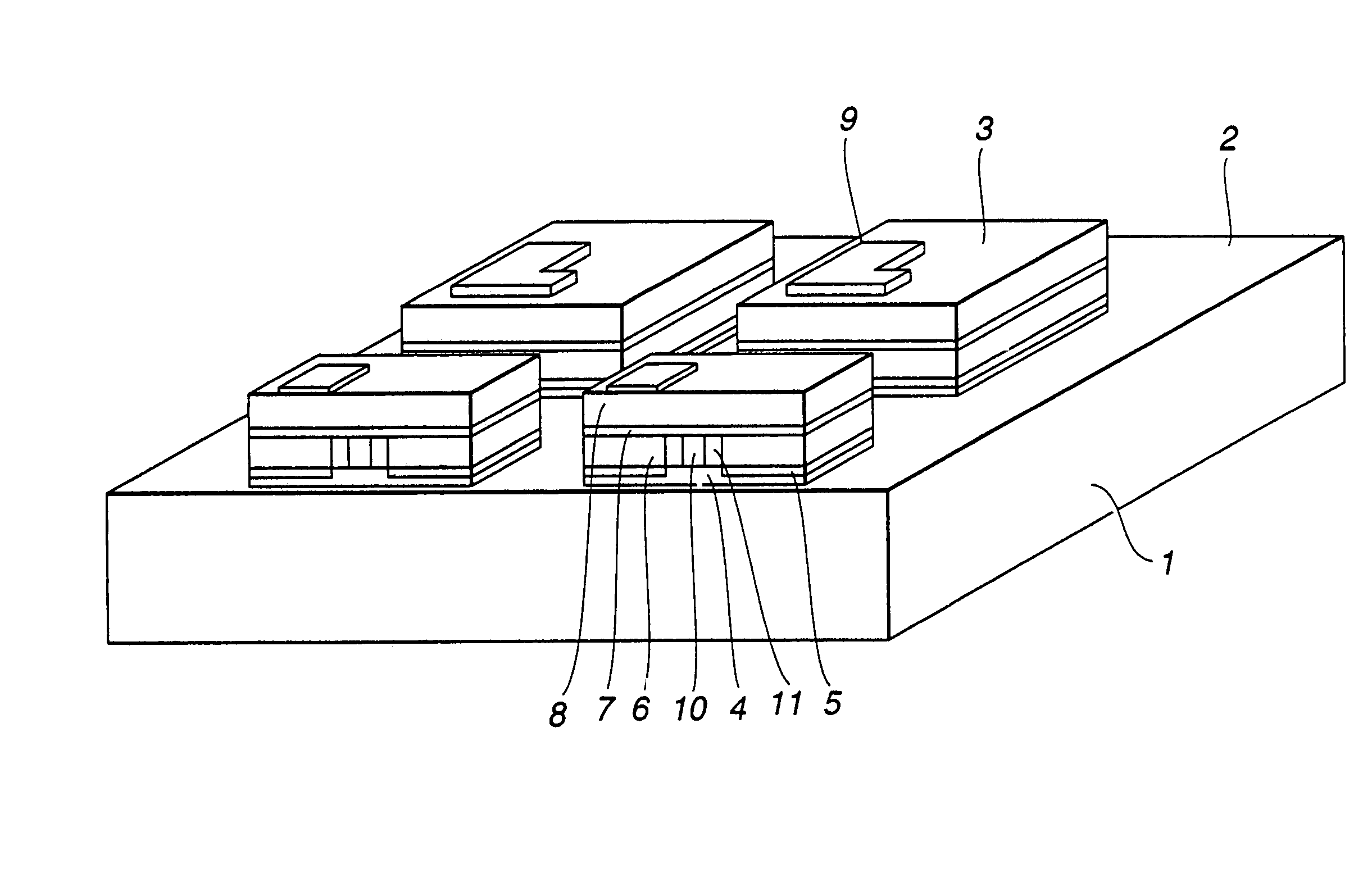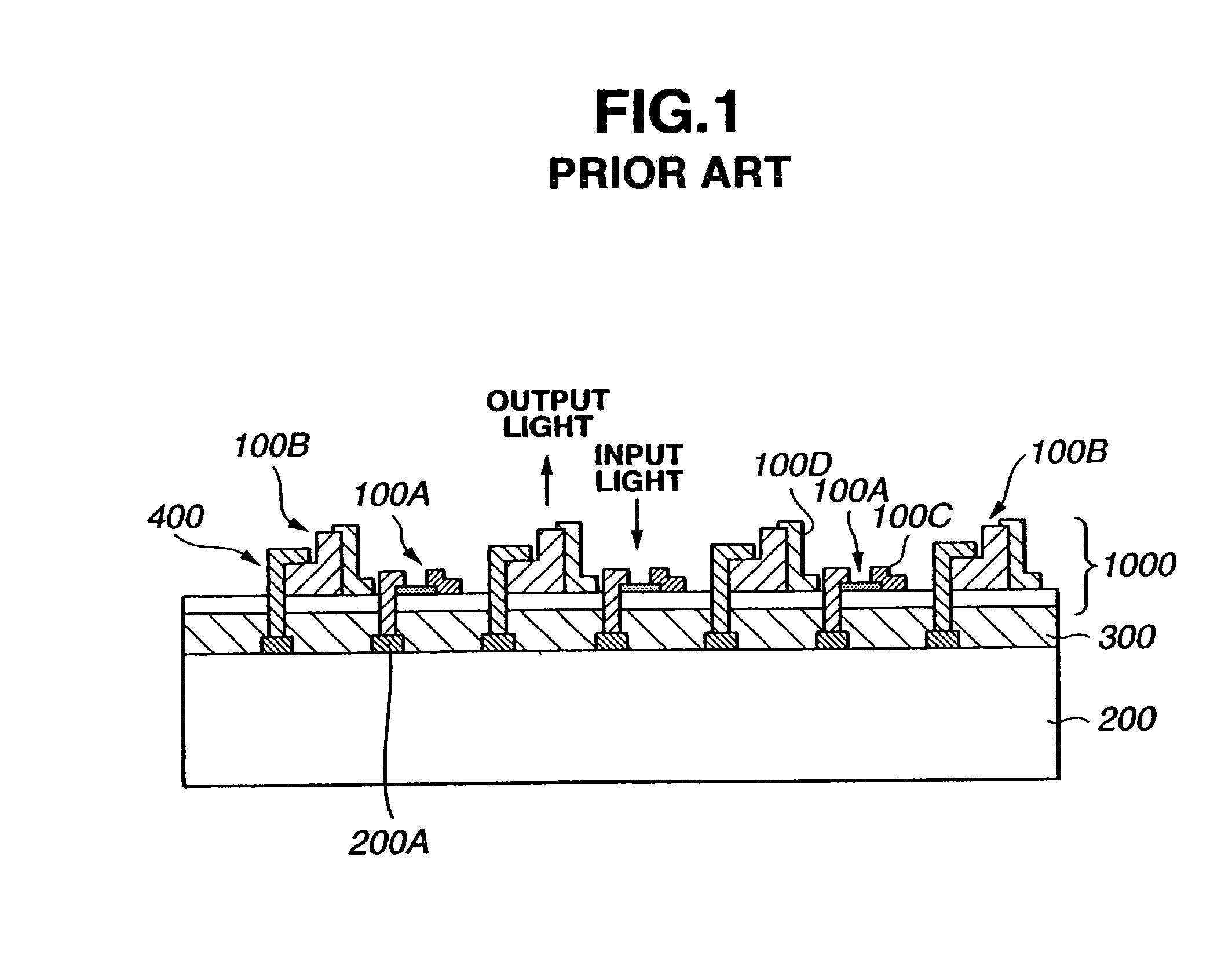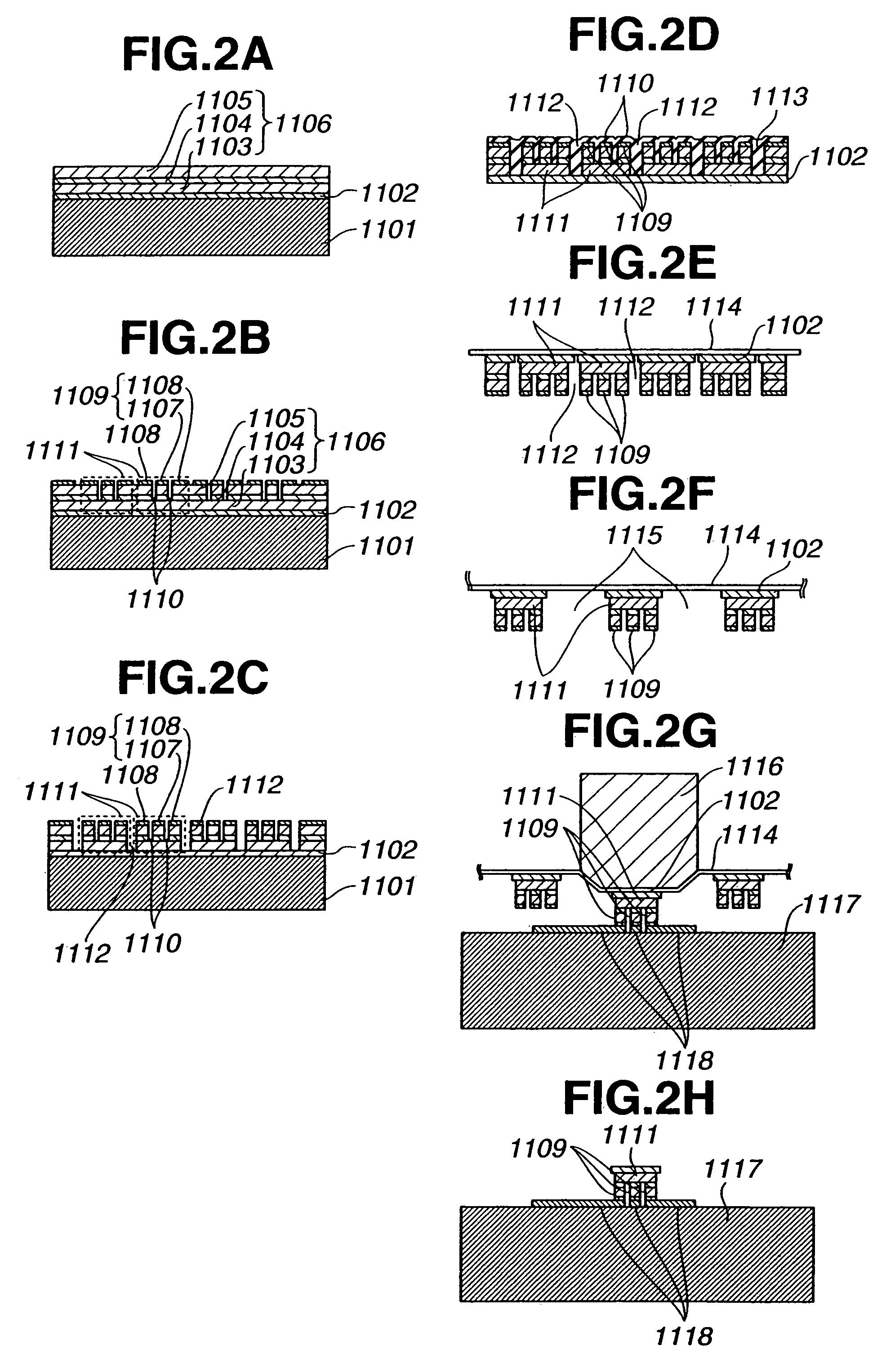Surface optical device apparatus, method of fabricating the same, and apparatus using the same
a surface optical device and apparatus technology, applied in the field of surface optical device apparatus, can solve the problems of poor thermal radiation characteristic, inferior luminary characteristics, light radiation efficiency and light output, and limitations on process freedom (i.e., plasma processing, processing temperature, etc.) to achieve the effect of improving productivity
- Summary
- Abstract
- Description
- Claims
- Application Information
AI Technical Summary
Benefits of technology
Problems solved by technology
Method used
Image
Examples
first embodiment
[0092](First Embodiment)
[0093]The first embodiment of the present invention is directed to a structure in which a surface emitting laser is used as the surface emitting device, and only its functional layer, including a light radiating layer and a mirror layer, is transferred to a ceramic substrate of AlN or the like having good thermal conductivity. FIG. 3 illustrates a perspective view of such a structure. In FIG. 3, the functional layer between the surface optical devices is completely removed.
[0094]An electrode 2 of Ti / Pt / Au is formed on an appropriate place of an AlN ceramic substrate 1 on which a surface emitting laser 3 is implemented, and this electrode 2 serves as a common electrode. A Ti / Pt / Au electrode 4 formed as a p-side electrode of the surface emitting laser 3 is thermally connected to the common electrode 2 with an Au / Sn solder (not shown) disposed on an appropriate portion of the electrode 2. Besides the solder formed by evaporation or plating, connection may be car...
second embodiment
[0116](Second Embodiment)
[0117]The second embodiment of the present invention is directed to a structure in which an electrode pattern is formed as a common electrode on an implementation substrate 1, and a thinned functional layer of a surface emitting laser 3 is simply aligned with and implemented on the implementation substrate 1. Where the number of devices 3 in an array increases, a wiring matrix as illustrated in FIG. 8 is advantageous in simplifying the structure of the electrical wiring. Therefore, the common electrode on the implementation substrate 1 is separated into a plurality of stripe-shaped portions.
[0118]The structure of the surface emitting laser 3 is similar to that of FIG. 3. An electrode pattern 60 of plural lines is formed on the AlN substrate 1 as illustrated in FIG. 8, and the functional layer of the surface emitting laser 3 is transferred onto the stripe-shaped electrode pattern 60 as in the first embodiment. The p-side electrodes of the devices 3 are separa...
third embodiment
[0123](Third Embodiment)
[0124]In the above embodiments, the process of fabricating an MCM is described. However, it is desirable that a collective process be carried out on a wafer to improve the productivity.
[0125]FIG. 10 illustrates this collective processing manner. In the third embodiment, a relatively inexpensive Si substrate is used. Regions 81, on which the device is implemented, are arranged in a two-dimensional array at predetermined intervals on the Si substrate 80. Electrodes are initially formed on the regions 81 on the wafer of the Si substrate 80 as in the first or second embodiment, a necessary number of arrays of surface emitting lasers 84 are cut out from a GaAs substrate 83, and the arrays of the surface emitting lasers 84 are implemented on the electrodes by a die-bonding apparatus, respectively. When the electrodes are formed by lithography, the electrodes can be arrayed with the precision of a photomask, and the device array 84 can be precisely implemented by th...
PUM
| Property | Measurement | Unit |
|---|---|---|
| thickness | aaaaa | aaaaa |
| diameter | aaaaa | aaaaa |
| size | aaaaa | aaaaa |
Abstract
Description
Claims
Application Information
 Login to View More
Login to View More - R&D
- Intellectual Property
- Life Sciences
- Materials
- Tech Scout
- Unparalleled Data Quality
- Higher Quality Content
- 60% Fewer Hallucinations
Browse by: Latest US Patents, China's latest patents, Technical Efficacy Thesaurus, Application Domain, Technology Topic, Popular Technical Reports.
© 2025 PatSnap. All rights reserved.Legal|Privacy policy|Modern Slavery Act Transparency Statement|Sitemap|About US| Contact US: help@patsnap.com



